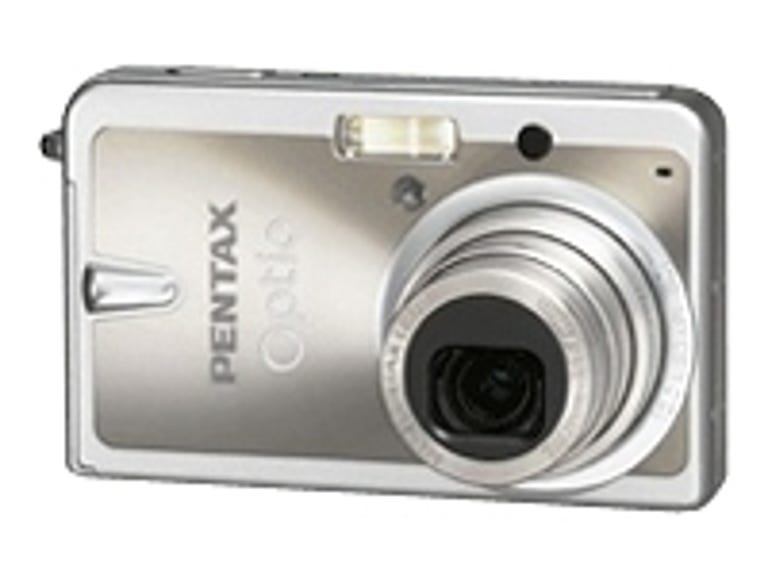With the no-frills Optio S10, Pentax bucks the trend of loading up point-and-shoot cameras with neat-sounding but dubiously useful features--OK, so I'm not a big face-detection fan--and sticking true to its photographic roots by including some very useful features that we wish we'd see more often.
The Good
The Bad
The Bottom Line
A basic budget ultracompact, the 10-megapixel S10 incorporates an f2.8-5.4 38mm-114mm-equivalent 3x zoom lens and 2.5-inch LCD. At 2.1 inches by 3.4 inches by 0.8 inch and weighing a mere 4.6 ounces, the S10 fits comfortably in a pants pocket. The all-metal body feels generally well made (though the mode/down button on our evaluation unit tended to stick annoyingly) and comes in two versions: a dark-gray-and-silver mass-market model and a blue-and-silver style sold only through Wal-Mart.
The control layout is pretty typical for a snapshot camera. The power and shutter buttons sit on top, while the zoom switch and review, menu and green programmable function button sit on the back next to the LCD. The four-way-nav-plus-OK doubles as flash, macro, self-timer, and shooting mode direct-access controls. I can't decide whether it's merely an oddity or a real annoyance that both USB and charger connectors sit under the battery/SD card compartment cover.
You can set the green button to bring up any four shooting functions. For example, I set it to access ISO speeds, metering, exposure compensation, and focus mode. Though it lacks manual and semimanual exposure controls like aperture- and shutter-priority modes, the S10 does offer some nice convenience features. My favorite is ISO Correction, an auto-ISO mode that lets you set the maximum selected sensitivity to any full stop from ISO 100 to ISO 1,600. Every camera should have this. It also provides both auto and forced flash red-eye reduction modes, where most cameras only supply auto, and a basic lower-power Soft Flash. The Tracking AF, on the other hand, is a nice idea but doesn't seem to work very well. On the irritating side, however, the macro modes only work within a limited set of focal lengths: 38mm-57mm-equivalent for standard macro and 38mm for super macro. Finally, the SR Shake Reduction is the usual high ISO/high shutter speed option. The rest of the features fit the typical point-and-shoot profile, including a variety of scene program modes and several playback and slideshow views.
By the numbers, the S10 performs well for a budget shooter. From power on to first shot takes a 1.8 seconds. Time to focus and snap runs only 0.5 second in good light, though that rises to 1.3 seconds in dimmer situations--pretty good for a snapshot camera, but slower than you really want. The interval between two consecutive shots is a brisk 1.3 seconds, which rises to 2.5 seconds with flash. It lags the competition a big in burst mode, however, where it snaps at only about 1.1 frames per second.



Unlike many budget models we've seen lately, such as the Sony Cyber-shot DSC-T2, Pentax strikes the right balance between noise suppression and sharpness in the S10. It produces nicely sharp photos with relatively little image noise, and which remain usable up to and including ISO 400--about a stop beyond the usual. It displays very good color, with generally neutral-to-cool white balance, even exposures and a broad dynamic range. The camera's only apparent weakness is its lens geometry, which exhibits slightly worse-than-usual barrel distortion at its widest end.
Though it's not quite up to performance standard of the Canon PowerShot SD1000, the Pentax Optio S10 certainly holds its own against higher-profile competitors from companies like Sony and Olympus.
(Shorter bars indicate better performance)
| Typical shot-to-shot time | Time to first shot | Shutter lag (dim) | Shutter lag (typical) |
(Longer bars indicate better performance)



